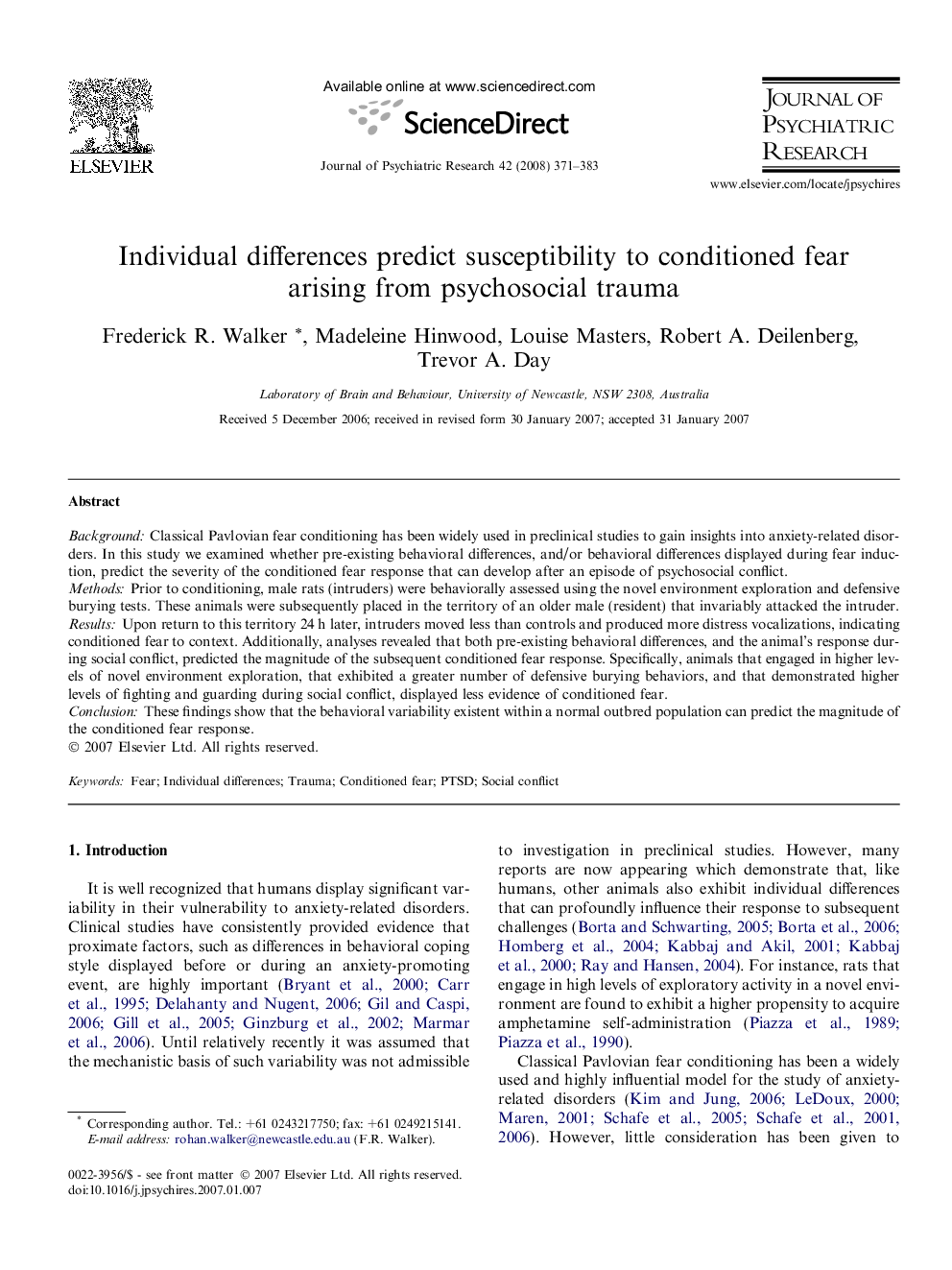| Article ID | Journal | Published Year | Pages | File Type |
|---|---|---|---|---|
| 327203 | Journal of Psychiatric Research | 2008 | 13 Pages |
BackgroundClassical Pavlovian fear conditioning has been widely used in preclinical studies to gain insights into anxiety-related disorders. In this study we examined whether pre-existing behavioral differences, and/or behavioral differences displayed during fear induction, predict the severity of the conditioned fear response that can develop after an episode of psychosocial conflict.MethodsPrior to conditioning, male rats (intruders) were behaviorally assessed using the novel environment exploration and defensive burying tests. These animals were subsequently placed in the territory of an older male (resident) that invariably attacked the intruder.ResultsUpon return to this territory 24 h later, intruders moved less than controls and produced more distress vocalizations, indicating conditioned fear to context. Additionally, analyses revealed that both pre-existing behavioral differences, and the animal’s response during social conflict, predicted the magnitude of the subsequent conditioned fear response. Specifically, animals that engaged in higher levels of novel environment exploration, that exhibited a greater number of defensive burying behaviors, and that demonstrated higher levels of fighting and guarding during social conflict, displayed less evidence of conditioned fear.ConclusionThese findings show that the behavioral variability existent within a normal outbred population can predict the magnitude of the conditioned fear response.
